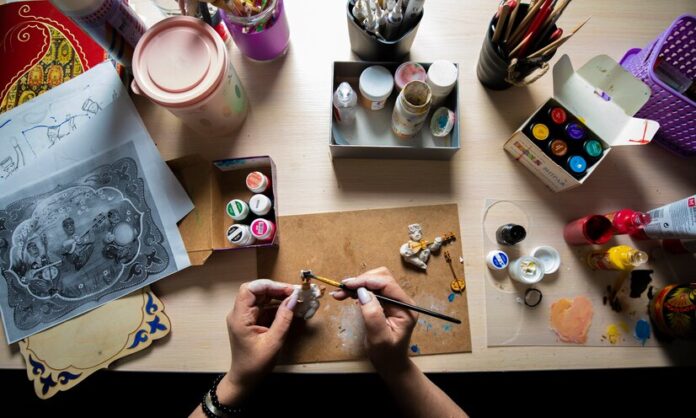A well-rounded education encompasses more than just technical or scientific knowledge. The arts and humanities play a crucial role in shaping well-rounded individuals by nurturing creativity, critical thinking, and emotional intelligence. These disciplines provide valuable skills and perspectives that are essential for personal growth, societal development, and career success.
1. Understanding the Arts and Humanities

The arts and humanities encompass a wide range of disciplines that explore human expression, culture, and values.
- Arts: Includes visual arts, performing arts, music, and design, focusing on creative expression and aesthetic appreciation.
- Humanities: Encompasses literature, philosophy, history, linguistics, and cultural studies, which examine the human experience and moral questions.
2. Fostering Critical Thinking and Problem-Solving
Studying arts and humanities cultivates the ability to analyze, interpret, and evaluate information critically.
- Encourages questioning assumptions and exploring multiple perspectives.
- Helps in understanding complex societal issues and proposing innovative solutions.
- Develops transferable skills that are applicable across various fields, including business, law, and public policy.
3. Enhancing Creativity and Innovation
Arts and humanities nurture imagination and the ability to think outside the box.
- Creative thinking is essential for innovation in technology, design, and entrepreneurship.
- Engaging with literature, music, or visual arts can inspire new ideas and approaches to problem-solving.
- Historical and cultural studies provide context for adapting past innovations to contemporary challenges.
4. Cultivating Empathy and Emotional Intelligence
Understanding diverse cultures, histories, and human experiences fosters empathy and emotional intelligence.
- Literature and history provide insights into different lives, building the ability to connect with others.
- Arts encourage self-expression and a deeper understanding of emotions, enhancing interpersonal relationships.
- These skills are particularly valuable in leadership, counseling, and teamwork settings.
5. Strengthening Communication Skills
Arts and humanities focus on storytelling, interpretation, and persuasive communication.
- Enhance written and verbal communication through the study of language and literature.
- Provide tools to articulate ideas effectively, an essential skill in any profession.
- Encourage the use of rhetoric and narrative to influence, inspire, or inform audiences.
6. Preserving Cultural Heritage and Promoting Global Awareness
Arts and humanities help preserve and appreciate the richness of cultural heritage.
- History and cultural studies illuminate the evolution of civilizations, fostering a deeper appreciation of diversity.
- Artistic practices and literature connect us to global traditions and contemporary movements.
- Encourages global citizenship by promoting tolerance and understanding.
7. Balancing STEM with Arts for STEAM Education
Integrating arts with science, technology, engineering, and mathematics (STEM) creates STEAM education, a holistic approach to learning.
- Bridges the gap between technical and creative disciplines.
- Encourages innovative problem-solving by combining analytical and imaginative thinking.
- Prepares students for future careers where interdisciplinary skills are increasingly valued.
8. Preparing for Diverse Careers
Arts and humanities graduates possess versatile skills that prepare them for a variety of careers.
- Opportunities include roles in education, media, marketing, public relations, law, and nonprofit work.
- Employers value the creativity, adaptability, and communication skills that arts and humanities studies cultivate.
- The demand for human-centered skills continues to grow in an AI-driven and automated world.
Conclusion
The arts and humanities are integral to holistic education, offering more than just knowledge of human culture and creativity. They develop critical thinking, empathy, and communication skills while preserving cultural heritage and inspiring innovation. Balancing the arts and humanities with STEM disciplines fosters well-rounded individuals who are better prepared for the challenges of a rapidly evolving world.
Incorporating the arts and humanities into education not only enriches students’ lives but also equips them to contribute meaningfully to society. The combination of technical expertise and humanistic understanding is key to creating a brighter and more inclusive future.
FAQs
1. What are the arts and humanities?
The arts include creative fields like visual arts, music, and theater, while humanities focus on disciplines like literature, philosophy, and history that explore human culture and values.
2. Why are arts and humanities important in education?
They foster critical thinking, creativity, empathy, and communication skills, preparing students for diverse careers and meaningful lives.
3. How do the arts and humanities complement STEM education?
By integrating creativity and critical thinking into technical fields, they encourage innovation and a holistic approach to problem-solving.
4. Can arts and humanities lead to successful careers?
Yes, graduates can pursue careers in education, media, public relations, law, marketing, and more, as these disciplines cultivate versatile and in-demand skills.
5. What is STEAM education?
STEAM education integrates arts into STEM (science, technology, engineering, and mathematics) to create a balanced and interdisciplinary learning approach.
6. How do arts and humanities promote empathy?
By exploring diverse cultures, histories, and human experiences, they help individuals understand and connect with others on a deeper level.
7. Are arts and humanities relevant in today’s technology-driven world?
Absolutely. They provide the human-centered skills and cultural understanding needed to navigate and contribute to an increasingly globalized and automated society.


